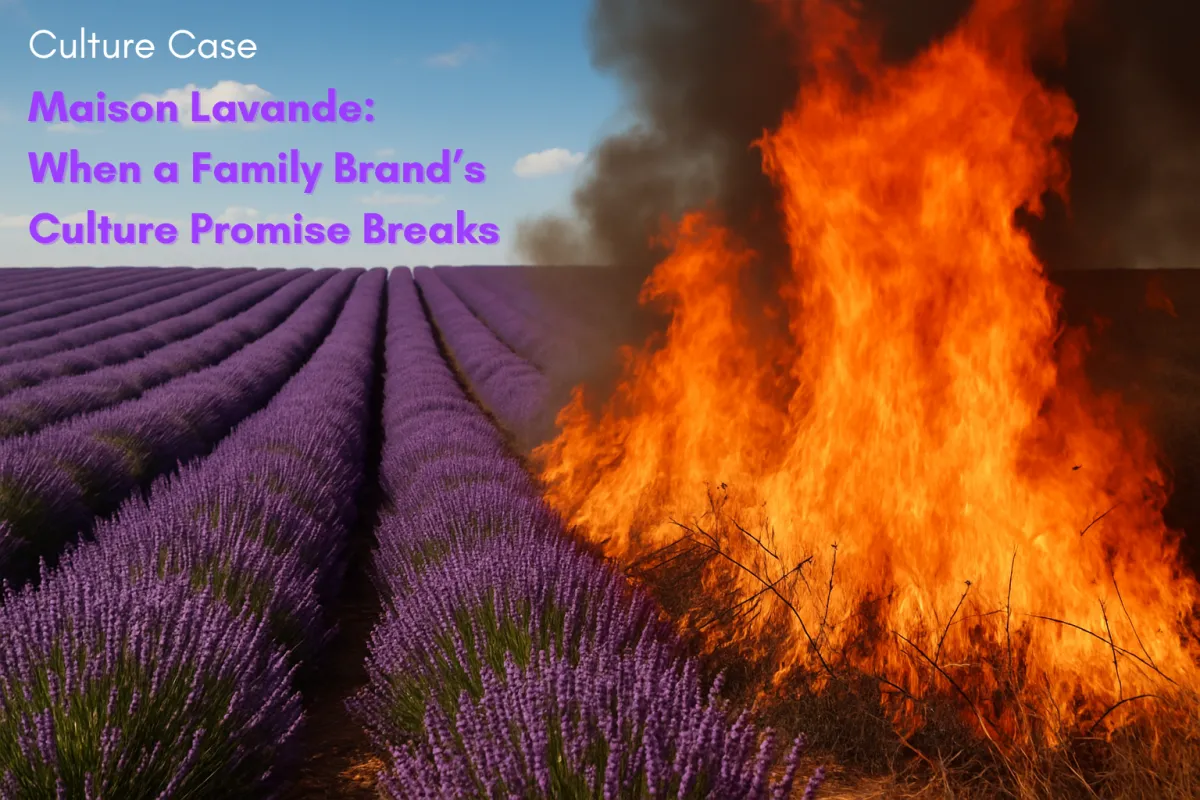Elevate Your Teams,
Your Culture, and Your Impact
We partner with organizations to strengthen leadership, build trust, and align company culture with business strategy. Whether you're scaling fast or ready to reignite performance, our accredited coaches help your people thrive.
MEET YOUR ACCREDITED COACHES
Meet the Coaches Who Help Teams Thrive
At Elevates Coaching, we bring together a team of certified coaches with diverse specialties—from culture transformation to executive development. Whether you're looking to build a winning workplace, reduce burnout, or empower rising leaders, we have the expertise to support your goals.
Elevates Coaching

Wellth by Kirsten



EXPLORE OUR PROGRAMS
COACHING PROGRAMS
Our programs support professional growth at every level—from founders and executives to emerging leaders and cross-functional teams. With coaching rooted in trust, clarity, and accountability, we help organizations build aligned, high-performing cultures.

ELEVATE THE HERO
Who this is for:
For professionals and entrepreneurs ready to live and lead with purpose. This program helps individuals overcome burnout, reconnect with their values, and become the hero of their own life and career.
Book Now and start your journey toward a more fulfilled, purpose-driven life.

ELEVATE THE LEADER
Who this is for:
Designed for emerging and senior leaders, this coaching experience strengthens emotional intelligence, communication, and decision-making. Leaders learn how to guide teams with confidence and clarity.
Book Now and start shaping the future of your leadership.

ELEVATE YOUR TEAMS
Who this is for:
For organizations ready to build trust, improve collaboration, and strengthen alignment across business units. This program empowers teams with shared purpose, healthy communication, and performance-driven culture.
Book Now and elevate your team’s potential to drive company success.
Take the First Step Toward Transformation
Ready to unlock your full potential? Connect with us today and start your journey toward greater success and fulfillment.
Limited to 3 openings per quarter—secure your spot today!
Q3 ELEVATE TEAMS AVAILABILITY
Get Matched With the Right Coach for Your Team
We work with organizations across industries to design custom coaching engagements that meet their people where they are.
Whether you're seeking executive support, team alignment, or culture revitalization—we'll match you with the right coach and structure.
Use the form attached to inquire about our availability and program fit.
A member of our team will be in touch shortly to coordinate next steps.
Book your Strategy Session Now

POPULAR QUESTIONS
Frequently Asked Questions
Elevates Coaching offers personalized coaching programs for professionals, leaders, and teams to achieve success, fulfillment, and growth. Our accredited coaches guide clients through transformative experiences to reach their goals. Here are some common FAQs
How do I book a coaching session?
Elevates Coaching offers personalized coaching programs for professionals, leaders, and teams to achieve success, fulfillment, and growth. Our accredited coaches guide clients through transformative experiences to reach their goals.
How long do the coaching programs last?
Our coaching programs typically last 3 to 6 months, with regular one-on-one or group sessions, depending on your chosen package.
Are your coaches certified?
Yes, all our coaches are accredited by the Association of Coaches and have extensive experience in leadership, business coaching, and personal development.
What is the cost of coaching?
Coaching fees vary depending on the program you select. We offer different pricing for our Elevates Hero, Elevates Leader, and Elevates Teams programs, with premium pricing for our Elevates Teams package. Book a free strategy session for more details and to see if we are a mutual fit.
How do I know if coaching is right for me?
If you’re looking to elevate your career, relationships, or leadership skills, coaching is an excellent way to gain clarity, overcome challenges, and achieve lasting change. Book a free strategy session to discuss if coaching aligns with your needs.
What should I expect from a coaching session?
Expect personalized support, actionable advice, and powerful strategies tailored to your unique goals. Each session will be a deep dive into specific areas you want to grow or overcome, with practical tools to implement in your daily life.
What types of coaching do you offer?
We provide company-wide coaching in leadership development, culture transformation, executive performance, and burnout recovery.
THOUGHT LEADERSHIP FOR FORWARD-LOOKING COMPANIES
ELEVATE YOUR KNOWLEDGE
Stay up to date on the latest in workplace performance, company culture, and leadership trends. Browse our insights, articles, and interviews for inspiration you can implement.

Culture Case: Maison Lavande - When a Family Brand’s Culture Promise Breaks
Maison Lavande: When a Family Brand’s Culture Promise Breaks
Brand Background: Family at the Heart of Maison Lavande
La Maison Lavande was founded in 2009 by Nancie Ferron and Daniel Joannette after a romantic trip to Provence, France[1]. They planted lavender on their farm in Saint-Eustache, Quebec, and built not just a product line of perfumes and lavender-based goods, but an entire experience – complete with picturesque lavender fields open to visitors, boutiques, a café, and family-friendly activities[2][3]. From the beginning, “La Maison Lavande, c’est d’abord et avant tout une histoire de famille” (above all a family story)[4]. The founders’ daughters, Florence and Marjolaine Ferron, eventually joined the business and became its public faces – Florence as communications & marketing director and Marjolaine in communications as well[4]. Even extended family and friends worked at the company, reinforcing the family atmosphere in the workplace[5][6]. This tight-knit family culture translated into the brand’s identity: passionate, authentic, and deeply personal. As one article noted, Maison Lavande’s success owed much to the passion and authenticity the family poured into it – “Notre entreprise, c’est une histoire de famille, pour vrai!” (Our business is a family story, for real!)[7]. Customers didn’t just buy lavender products; they bought into a family narrative and felt a personal connection to the brand.
From early on, the Ferron sisters were integral to Maison Lavande’s brand image. They shaped the company’s voice on social media and in marketing, becoming the friendly faces that greeted visitors at the lavender fields and online[8][9]. The brand actively cultivated authentic relationships with customers – for example, staff in Maison Lavande’s own boutiques were encouraged to form personal bonds with shoppers (“a good sales advisor even knows the client’s dog’s name,” Florence joked)[10]. This approach built a loyal community of clients very attached to the brand[11]. On social media, the sisters shared behind-the-scenes glimpses and family moments, further strengthening the sense that Maison Lavande wasn’t just selling products but inviting customers into the family. In short, family values, closeness, and authenticity became the cornerstone of Maison Lavande’s brand promise. It positioned itself as a “très familiale” (very family-oriented) local enterprise[12], and consumers responded with affection and trust.
The Culture Promise and Brand Values
Maison Lavande’s culture promise – the implicit pact between the brand and its community – centered on family, trust, and authenticity. Externally, the brand promise was an open, friendly family business that treated customers like extended family. Internally, this meant a culture where family members led with unity and passion, presumably ensuring decisions would uphold those familial values. This alignment between what the brand said it was and how it actually operated was a key part of its authenticity. As a fan observed, Maison Lavande “repose depuis ses débuts sur un fort capital d’authenticité et de proximité” – from its beginnings it has relied on a strong capital of authenticity and closeness[8][13]. The Ferron sisters embodied this authenticity: their constant presence and approachable personalities were integral to the customer experience[9]. Regular visitors came to expect chats with Florence and Marjolaine in the lavender fields each summer. The sisters functioned as “porte-parole, stratèges et visages de l’entreprise” – spokespeople, strategists, and faces of the company[13]. In essence, the value proposition of Maison Lavande went beyond product quality; it was selling an emotional connection grounded in family-run charm and transparency.
Crucially, Maison Lavande’s external brand promise was backed by an internal culture that seemed to live those values. Employees were treated like family, and many were indeed family or friends. The owners were known to visit all the boutiques frequently to keep a pulse on customer and staff feedback[14]. The company’s 10-year anniversary piece emphasized “la communauté de clients fidèles très attachés à la marque” (a community of loyal customers very attached to the brand)[11] – a direct result of that authenticity and personal touch. This tight alignment of brand image and company culture had been a recipe for success.
However, maintaining a culture promise requires that leadership decisions consistently uphold the values of the brand. When leadership fails to walk the talk, it risks breaking the trust that underpins the brand’s relationship with its customers. Unfortunately, that is exactly what transpired at Maison Lavande in 2025: a family conflict and business decision would soon test the company’s values and the public’s trust in dramatic fashion.
A Family Business Fractured: The Internal Conflict
In early 2025, fissures in the Ferron family dynamic began to surface publicly. On April 8, 2025, both Ferron sisters abruptly stepped away from their roles at Maison Lavande[15][16]. For a few weeks, nothing was said officially. Loyal followers noticed the sisters were suddenly absent from the brand’s social media and advertising – an unusual silence given their previously ubiquitous presence[17][18]. Whisperings of trouble grew loud enough that by April 30, Maison Lavande’s management (effectively, the parents) felt compelled to address the situation. They issued a carefully worded public statement on Facebook and Instagram, confirming Florence and Marjolaine were on a “pas de recul” (step back) due to “divergences de vue professionnelles et familiales” – professional and familial differences of opinion[19][20]. The post acknowledged that “les familles en affaires ne sont jamais à l’abri de situations semblables” – families in business are never immune to such situations[21]. In a reassuring tone, the company expressed hope it was a temporary pause, and noted they had deliberately slowed down communications on social media out of respect for this “moment délicat”[22][23]. “Parfois, il faut laisser au temps le soin de faire son œuvre,” the statement said – sometimes you just have to give time a chance to work things out[24].
Throughout spring and summer 2025, Maison Lavande operated in a strange limbo. The sisters remained completely silent publicly, and the brand’s usually cheery social accounts were toned down and sporadic[25][9]. No “départ définitif” (no definitive departure) was announced and “encore moins de perspective de retour” (even less any prospect of return)[25][26]. This uncertainty – no clarity if the sisters would come back – left the company’s most ardent fans anxious and full of questions[27]. After all, if Florence and Marjolaine were the soul of the brand, how long could Maison Lavande thrive without its soul? “Peut-on séparer la marque de ses visages?” wondered one commentator – can you separate the brand from its faces?[28]. It was a delicate governance situation: an SME so heavily personified by its founders suddenly had an obvious leadership void[29][30].
Behind the scenes, the reality was even more turbulent. While details weren’t publicly confirmed due to apparent confidentiality agreements (the sisters later alluded to limits on what they could say[31][32]), insiders described a serious family rupture. Reddit communities like r/InfluenceQuebec and r/SnarkinfluencerduQc buzzed with “tea” about the drama. According to multiple commenters claiming inside knowledge, the root issue was a bitter conflict between the parents and daughters[33][34]. One person noted the Ferron parents and sisters had been on poor terms for over a year, often not even speaking outside of work[35]. The father, Daniel, was described as a very controlling personality who struggled to “pass the torch” and insisted “ça doit être fait à sa manière” (it must be done his way)[36][37]. The same commenter pointed out that Maison Lavande had grown into a multi-million dollar business, and although the sisters contributed enormously to that growth, it was still the parents’ “baby” and investment at the end of the day[38][39]. In their view, the clash likely revolved around the succession and future ownership of the company[38][40].
By mid-year, speculation crystalized around a probable cause: the parents were looking to sell Maison Lavande to outside investors instead of handing it down to the daughters, leading to a major fallout. “Pour que le conflit soit grand au point de quitter, ça ne peut qu’être lié à l’argent,” one observer wrote – for the conflict to be big enough that the sisters left, it must be about money[41]. Perhaps, they suggested, the parents “ont reçu une offre d’achat très élevée qui remet en question la valeur entendue pour le rachat par les filles” – received a very high purchase offer that upended whatever understanding existed for the daughters to take over[41]. In other words, mom and step-dad might sell the company to the highest bidder rather than transition it to their children. If true, that decision would directly contradict the family-oriented narrative of the brand. Essentially, leadership would be prioritizing profit over family legacy – a choice at odds with Maison Lavande’s core values.
Whatever the exact trigger, it was clear the family dispute had reached irreconcilable levels by early fall 2025. On October 6, Marjolaine Ferron finally broke the silence, posting a heartfelt Instagram video announcing that she and her sister were officially leaving Maison Lavande[42][43]. In the emotional post, Marjolaine admitted “Je n’aurais jamais pensé faire cette annonce. J’ai travaillé tellement fort pour que ça n’arrive jamais” – I never thought I’d make this announcement; I worked so hard so this would never happen[43][44]. “J’ai le cœur brisé,” she wrote – my heart is broken – but said they felt they owed the community transparency despite their pain[44]. She thanked the community, emphasizing “on n’effacera jamais comme si rien n’avait existé… La communauté est celle qui nous a tout permis” – we will never erase things as if nothing happened; the community is what allowed everything for us[44]. Florence also posted a message of love for colleagues and family who supported her “dans cette tempête” (in this storm), expressing that while this chapter ends differently than she’d hoped, she is looking forward to “une suite…différente, mais lumineuse” (a future that will be different, but bright)[45][46].
Thus, within 24 hours, Quebec’s beloved lavender family business went from “pause” to permanent split. It was now public and official: the Ferron sisters, faces of the brand, were gone from Maison Lavande. A chapter closed – and with it, the very foundation of the brand’s culture promise was shaken.
Broken Promises: When Leadership Fails the Brand’s Values
This turn of events represented a profound breach of Maison Lavande’s culture promise. The company’s leadership (the parents) failed to uphold the very value that the brand had been built upon: family. Externally, Maison Lavande had always promoted itself as a united family venture, “pour vrai”. But when push came to shove, the owners’ actions – effectively pushing out their daughters and potentially selling to outsiders – contradicted that ethos. As one disappointed customer observed, “l’entreprise n’est plus la même depuis qu’elles [les sœurs] n’y sont plus.” (The company isn’t the same since the sisters are no longer there)[47][48]. Another commented on how sad it was to see such a cherished Quebec business risk “perdre une partie de sa clientèle à cause d’une chicane de famille” – risk losing a part of its clientele because of a family quarrel[49][50]. To many, it felt like a betrayal of the brand’s founding principles.
From a brand leadership perspective, the Ferron parents severely miscalculated the brand equity tied to their culture. They might have viewed Maison Lavande in pure business terms – a valuable company they started and have the right to sell – but consumers saw Maison Lavande as the Ferron sisters’ company as much as (or more than) the parents’. By sidelining the sisters, the leadership essentially undermined the authenticity and trust that had been painstakingly built. It’s a classic case of brand promise vs. brand delivery: the promise was “we are a close-knit family business you can trust,” but the delivery (or outcome) was “we’re a family business that couldn’t keep our family together.” The disconnect couldn’t be more stark, and it did not go unnoticed.
One of the clearest signs of this broken trust was the reaction on social media. Fans felt a mix of sorrow, anger, and disbelief. Under Maison Lavande’s initial April post about the sisters’ absence, the community had largely responded with support and hope – many left comments of encouragement, saying they hoped to see the sisters back soon[51]. The company at that time proudly noted “la communauté fait preuve d'une grande bienveillance” – the community is showing great kindness[51]. However, as months dragged on with silence, that goodwill gave way to frustration. Observant customers pointed out the irony that the brand known for its “image ouverte et authentique” (open and authentic image) was now shrouding its issues in secrecy[52]. “Chose qui est maintenant freinée par ce qui se produit dans l'ombre,” wrote Billie.ca – that openness and authenticity is now hampered by what’s happening in the shadows[52]. In other words, Maison Lavande’s leadership stopped communicating transparently, directly undermining the authenticity that consumers valued.
Indeed, communication missteps amplified the sense of broken promise. Instead of proactively addressing the situation (to the extent possible), the company opted for silence and PR-speak for half a year. While there may have been legal reasons (shareholder agreements or NDAs were hinted at[53]), the lack of authentic communication from the brand contrasted sharply with how candid and engaging the sisters had always been. This gap created a vacuum of trust. Customers were left to speculate on Reddit and elsewhere, which fueled rumors and perhaps worse interpretations of the situation. A user on Reddit even mused if the original poster asking about the sisters was an internal person trying to gauge public perception[54][55] – a sign of how little official info was provided. When a brand built on human connection suddenly goes quiet, it alienates the very community that gave it strength.
At the core, the leadership failed to align decisions with the brand’s values. It’s understood that business succession and ownership deals can be complex, but how such decisions are made and communicated should still reflect the brand’s ethos. Had Maison Lavande’s owners truly prioritized “family first,” they might have found a way to keep the sisters involved or at least treated them (and by extension, the community) with more respect in the process. By all insider accounts, that didn’t happen. Instead, it appears the opposite: a drawn-out feud, a breakdown of trust within the family, and finally a public split that revealed the family business wasn’t as unified as portrayed. This revelation shattered the illusion that had been central to Maison Lavande’s appeal.
The fallout illustrates the high cost of a broken culture promise. Internally, it resulted in the loss of key talent and presumably morale issues among remaining staff (who suddenly lost two charismatic leaders). Externally, the brand’s reputation took a hit – not necessarily in the mainstream media (this was more a local business story than a front-page scandal), but critically among its target audience and loyal fans. The sisters themselves acknowledged feeling an obligation to be transparent with their followers, “dans les limites de ce qu’on peut” (within the limits of what we can say)[44], implying there was more they wished they could explain. Their tearful goodbye messages humanized them and implicitly cast the corporate side (the parents) as the ones who forced this outcome. For a brand, that’s a nightmare scenario: essentially your brand champions (who are beloved by customers) are perceived as having been wronged by your brand’s leadership. It’s brand equity self-destruction.
In branding terms, Maison Lavande’s leadership created a values-action gap. They espoused “family” as a value but did not act in accordance with it. Modern consumers are quick to sense such dissonance. As Forbes has noted, successful companies “never stray away from their culture promise”[56], and when they do, customers feel it immediately. Here, Maison Lavande strayed, and the backlash was palpable.
Community Backlash and Public Sentiment
Public reaction to the Maison Lavande saga has been notably emotional. This isn’t a case of a dry corporate shuffle; it’s a family drama that played out in the court of public opinion. In Quebec, Maison Lavande enjoys a bit of a cult status – a “compagnie québécoise chouchou de plusieurs” (a Quebec company that is a darling of many)[57]. Many customers have fond memories of summer visits to the lavender fields, interactions with the Ferron sisters, and following the family on social media. Thus, the separation struck a nerve. Sentiment on social media has skewed negative overall, especially among the brand’s core fanbase. Fans expressed sadness and frustration that what they perceived as a “beautiful family business” was torn apart. “On aime beaucoup cette belle entreprise et les soeurs Ferron, sans qui la Maison Lav n’est plus la même,” one commenter lamented – we love this beautiful company and the Ferron sisters, without whom Maison Lavande is no longer the same[58][59].
Some longtime customers even talked of boycotting or losing interest in Maison Lavande going forward. “Sans les soeurs, je ne suis pas certaine que je continue d'encourager l'entreprise,” wrote one user. “J’y vais d'abord et avant tout… pour la connexion et les discussions avec elles!” – Without the sisters, I’m not sure I’ll keep supporting the business; I go first and foremost for the connection and chats with them[60][61]. Such comments show how deeply the sisters were intertwined with the product experience. It wasn’t just lavender soap or perfume bringing people back – it was the people behind the brand. For those customers, the magic is gone. This kind of reaction is dangerous for any brand: it indicates a potential erosion of brand loyalty. When customers explicitly say they might not buy anymore because a beloved figure left, it’s a sign the brand’s emotional connection (previously a strength) has flipped into a liability. People feel almost betrayed and thus disengage.
On the other hand, not everyone reacted with doom-and-gloom for the company. There were practical voices noting that Maison Lavande’s products remain the same quality, and that many customers who buy in malls or online might not even know the sisters or care. “Pour moi ça ne change pas le produit… M’en fou un peu,” one person said – for me, it doesn’t change the product; I don’t really care (they admitted they hadn’t followed the sisters closely)[62][63]. Another argued the company would survive because its foundation (the parents’ work and broader team) is solid, and that it has a broad base of customers beyond the Instagram followers[64][65]. These perspectives highlight that a portion of the customer base is product-centric and less concerned with the internal drama. For them, as long as lavender fields bloom and lotions smell good, they might continue to shop regardless. This presents an interesting split in Maison Lavande’s market: the “community” vs. the casual consumers. The community (brand enthusiasts) is upset and may shrink, but the casual consumers might carry on. The overall impact on sales will depend on how large and influential that enthusiast community is. However, given Maison Lavande’s heavy emphasis on community-building in its marketing, losing even a slice of loyalists can hurt long-term (through negative word-of-mouth, fewer organic social mentions, etc.).
Traditional media and influencer blogs also covered the saga, often with a tone of sorrow and intrigue. Local outlets like Silo 57 and Monde de Stars called the announcement “déchirante” (heartbreaking)[57] and noted it left no one indifferent. They highlighted the outpouring of supportive comments from fans but also the concern that the brand’s image has taken a blow. As one media piece summarized, customers “adoraient leur image ouverte et authentique, chose qui est maintenant freinée par ce qui se produit dans l’ombre” – consumers loved Maison Lavande’s open, authentic image, which is now being hindered by what’s happening behind the scenes[52]. This captures the public sentiment well: disappointment that something special has been lost. The media coverage also subtly pressured the company by voicing what fans were saying – essentially holding up a mirror to the brand: Look at what your core customers are feeling.
The Ferron sisters themselves have maintained goodwill with the public through their handling of the situation. By expressing genuine gratitude and heartbreak, they positioned themselves as victims of the situation rather than villains. This matters because it means the public ire is mostly directed at the parents/owners (who remain at Maison Lavande). The sisters have also hinted at future projects (“la suite sera différente, mais lumineuse” – the next chapter will be different but bright[66]), and one can imagine a segment of fans will follow them individually, perhaps supporting whatever new venture they pursue. In effect, the Maison Lavande brand has, for some, split into two identities: the corporate entity (now viewed as having lost its soul) and the personalities of Marjo & Flo (viewed sympathetically). This is a precarious position for the Maison Lavande company – it now must prove that it can “redefine itself without them”[67] and earn back the trust of its audience.
Lessons for Brand Leaders: Vision, Alignment, Leadership, Values, and Engagement (VALVE)
The Maison Lavande case is a cautionary tale for CEOs and brand leaders, especially those managing family businesses or founder-led brands. Several key lessons emerge when analyzed through the VALVE Company Culture Framework: Vision – Alignment – Leadership – Values – Engagement.
Vision: A brand’s vision – its long-term direction and sense of purpose – is what gives its culture continuity. For a family brand, that vision often includes legacy. At Maison Lavande, the disconnect seems to have started with a clash of visions: the sisters likely envisioned building and stewarding the brand for future generations, while the founders (their parents) were ultimately motivated to sell. That fundamental misalignment about the brand’s future wasn’t just a business disagreement – it created confusion for everyone watching from the outside.
Lesson: A brand’s long-term vision must be shared by leadership and grounded in its values. If your brand publicly stands for legacy, continuity, or family, the decisions surrounding ownership or succession must reflect that narrative. Otherwise, even sound business moves can feel like betrayal.
Alignment (Communication): Brand voice and communication strategy during a crisis are crucial. Maison Lavande chose a minimalist, guarded communication approach – which backfired among its most loyal followers. The months of silence created a narrative vacuum that was filled by speculation. Given the brand’s prior openness, this sudden opacity was jarring.
Lesson: In any brand crisis, communicate proactively and honestly as much as possible. While some details may be legally sensitive, acknowledging the audience’s concerns and reaffirming commitment to the brand’s values can help maintain trust. Going “radio silent” is rarely the best approach when your brand equity is built on personal connection. A better approach could have been periodic updates or messages that, without airing dirty laundry, at least conveyed respect for the community’s emotional investment. A brand’s voice in tough times matters more than in good times – it’s an opportunity to demonstrate authenticity. By contrast, Maison Lavande’s lack of authentic voice during the conflict was perceived as inconsistent with its identity and likely worsened public sentiment[52].Leadership: The role of leadership is paramount in upholding (or undermining) brand culture. Here, leadership failed – personal conflicts and perhaps pride prevented a resolution that kept the family intact. Leaders must sometimes sacrifice immediate self-interest for the greater brand legacy. Also, when conflict arose, how leadership managed it (transparency, fairness, empathy) was critical. The Ferron parents may have had sound business reasons to consider a sale, but a “très contrôlant” approach and lack of compromise led to losing two key leaders and fracturing the team.
Lesson: Brand leaders need to embody the brand’s values and practice enlightened leadership – that includes succession planning with heart, conflict resolution, and being champions of the brand’s culture promise. Leaders set the tone: if they break trust internally, it will break externally too. As an employer brand trend for 2025 notes, empowering leaders to authentically champion the brand and culture is vital – the Maison Lavande saga shows the inverse, how disengaged or misaligned leadership can quickly tarnish a brand.
Values: A brand’s core values and culture promise are not just marketing fluff – they set expectations among your customers and employees. Maison Lavande’s core value was family unity. If you champion a value (family, authenticity, etc.), you must be prepared to honor it even when difficult. Here, the value of family should have guided how the succession or sale was handled. When leadership made decisions seemingly contrary to that value (putting financial gain or personal egos first), the brand’s integrity in the eyes of customers was damaged.
Lesson: Be crystal clear on your brand’s values and treat them as non-negotiable guiding principles in major decisions. As the saying goes, “brand is culture, and culture is brand.” If you compromise your values internally, the external brand will suffer.
Engagement: Finally, the engagement and sentiment of your community is a mirror reflecting your brand’s actions. Maison Lavande’s community was not shy in expressing their disapproval – from Reddit threads to Instagram comments, they signaled that the brand had let them down.
Lesson: Pay close attention to your brand community’s feedback, especially in the wake of controversial decisions. If you see loyal customers openly questioning whether to continue supporting you, that’s a red flag requiring immediate engagement. Rebuilding trust with the community should be a priority. Sometimes that might include public gestures of reconciliation (if possible), or initiatives to highlight that the brand’s soul still lives (perhaps showcasing long-time staff, or new faces who carry the ethos). The worst thing a brand can do is dismiss such feedback as “noise.” In Maison Lavande’s case, the community’s reaction underscores that brand loyalty is deeply emotional. When emotional trust is broken, logical arguments (“the product is the same!”) may not suffice to win people back. It will take concerted effort for Maison Lavande to heal that relationship – if indeed it can without its two charismatic ambassadors.
For brand leaders, the take-away is to never take a culture promise lightly. If your brand’s identity is tied to a certain culture (in this case, a family atmosphere), every major decision should be filtered through the question: “Does this uphold or break our culture promise?” A brand’s reputation, once bruised, can be very difficult to restore – especially in the age of social media where loyal fans can quickly become vocal critics.
Maison Lavande now faces the challenge of moving forward without the sisters. Perhaps the parents will sell the company and new owners will rebrand or reposition it. Or perhaps they will attempt to carry on and reassure customers that “La Maison” is still in good hands. Either way, it’s an uphill battle. As one observer on Reddit poignantly asked, “Maison Lavande peut-elle réellement se redéfinir sans elles?” – Can Maison Lavande truly redefine itself without them?[67]. The answer will depend on how well the brand’s remaining leadership can realign with the values that endeared the company to customers in the first place, and how they communicate that alignment moving forward.
Conclusion
The Maison Lavande saga serves as a compelling case study on the importance of brand integrity and cultural alignment. A brand’s “secret sauce” – in this case, the authentic family vibe – can quickly turn sour if those in charge don’t honor it. Brand promises create expectations, and when leadership decisions shatter those expectations, the damage is both internal and external. Employees become disillusioned (or in this case, literally leave), and customers feel betrayed.
For CEOs and marketers, the insight is clear: your brand is only as strong as the culture and leadership behind it. Consistency, transparency, and principled decision-making are not just HR ideals; they are critical to maintaining brand trust. In an era when consumers crave authenticity, any sign of hypocrisy or value-breakage will be called out and amplified. Maison Lavande lost some of its authenticity when it lost the Ferron sisters and the unity they represented. Time will tell if the brand can recover that trust.
One thing is certain – this case has people talking (and not just about lavender). It’s a story of growth and success, but also of how family business dynamics can implode in the public eye, offering lessons in succession planning and conflict resolution for others. As a community member aptly put it, “les familles en affaires ne sont jamais à l’abri de situations semblables”[72][73] – family businesses are never immune to such situations. True enough. But with foresight and a steadfast commitment to values, perhaps more of them can navigate transitions without breaking the bonds that built the brand.
Sources: The case study analysis above is informed by various connected sources including local news outlets (e.g., Silo 57[74][43], Billie[72][52], Monde de Stars[15][22]), social media discussions by customers and insiders on Reddit[75][76][41], as well as historical context from brand interviews and articles (Detail Québec magazine[7][2]).
What our Clients are Saying
We help organizations align people, vision, and culture—and the results speak for themselves.

"... Through our exchanges I was able to articulate my purpose more clearly and have a better understanding of how to deliver, making use of assets I was not fully aware I possessed..."

Labelo Johnson
-Author, Course Creator

"...Working with Bradley has been a transformative experience. His unique style and empathetic nature make him a truly outstanding coach. I highly recommend him to anyone seeking personal growth and a more positive outlook on life."

Olena G.
-Entrepreneur, Finance

"... The experience of working with Bradley has been the most internally transformative experience I have ever had in my life."

Monica D.
-Coach, Artist

Elevate Your Life, Career, And Teams
Success and Fulfillment Begin Now.
Quick Links
Home
About Us
Services
Testimonials
FAQ's
Blog
